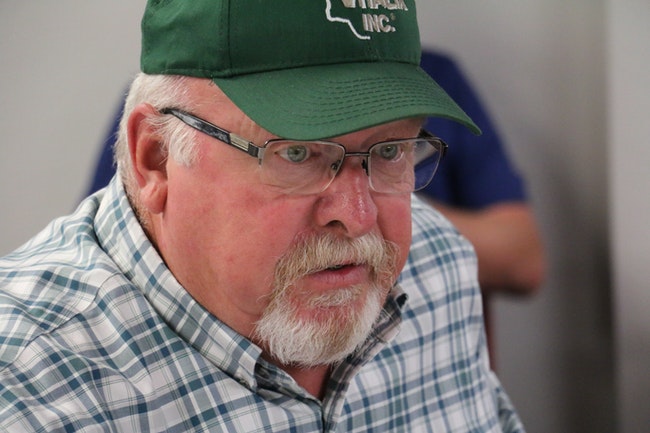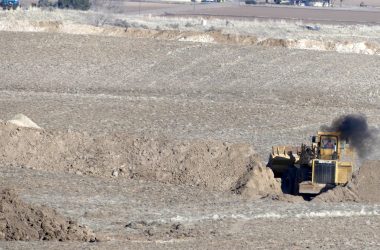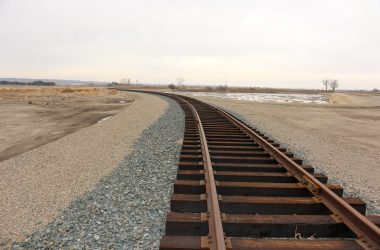Two years after state lawmakers cleared hurdles that would allow Malheur County to address its housing shortage by putting homes on farmland where they were once prohibited, not a single home has gone up as the intent of the bill is snarled in technical legal language that inadvertently stood in the way of the new housing.
Now, Malheur County is waiting for legislators to act once again, this time changing the definition of “high-value farmland” in a way that would finally clear the way for more rural housing.
Shawna Peterson, executive director of the Eastern Oregon Border Economic Development Board, a public body established to grow the economy within the region and a vital piece of the legislative strategy, said most of the land within the border region is within irrigation districts. Which, according to Peterson, prohibits the land from qualifying to be rezoned to build homes.
Under Senate Bill 16, passed in 2021, any rezoning of farmland would require a public hearing before a review board appointed by the Malheur County Court. In addition, the legislation requires a representative from the farming community, a border board member, a court member and someone from the planning commission.
The bill details the rezoning of some farmland into a minimum of two-acre lots with no more than 200 acres. This means opening the way for up to 100 homes.
Land that qualifies for rezoning must not have been farmed in the past three years, is not high-value farmland, does not have premium soils and must not have the potential to turn a profit from ag-related activities.
Regardless of whatever a review board finds, Peterson said that when the bill was drafted and later passed, they did not realize the boundaries of the local irrigation districts in the region were so broad in scope and that the maps were so “elusive.”
Peterson said while there is land outside of the irrigation district, it is difficult to identify how many eligible parcels are available. Mapping, Peterson said, is one of the barriers. She said the irrigation district’s maps are unavailable on a geographic mapping system or GIS, where they could get information about the parcel’s landscape characteristics to see if the properties qualify.
Eric Evans, Malheur County planning director, said the parcels located outside the district eligible for the special housing under the legislation are mainly located above the Owyhee Canal system. Evans said it is difficult to tell how many parcels are available, but the planning department is working on mapping out the area. Nonetheless, he said the area contains a large amount of sagebrush and the properties are primarily located in an extreme wildfire area.
Evans said the parcels would not be as “ideal” as those within the irrigation district.
Peterson said the draft bill’s proposed definition change to high-value farmland is a better fit.
She said the amended draft of the legislation affords all of the protections of the original bill but does not rely on irrigation district maps to define high-value farmland.
Evans said using the definition that any land within what the irrigation districts define as high-value farmland in its maps does not meet the intent of Findley’s bill original bill.
The aim, Evans said, was to include marginal farmland. Most of which, he said, is not irrigated and serves little to no agricultural purpose.
Evans said the planning department received $50,000 from the border board to implement the bill, which has funded a consultant and a legal firm to sort out the technical and legal aspects of rolling out the bill.
Peterson said the plan is to have the process ready before the legislation passes.
“We’ve been working hard on all the pieces and are just hung up on that pesky definition that inadvertently excluded most of the ground,” Peterson said.
Evans said he intends to propose an ordinance to the Malheur County Court and have it passed before the bill is pushed through the State Legislature.
The ordinance, he said, would ultimately establish the review board. According to Evans, roughly $30,000 of the $50,000 has been spent.
In addition, Evans said, he has been working with Winterbrook Planning, a consulting firm out of Portland that has done a lot of work for the county in the past. For example, he said Winterbrook had been helping him identify land that could be rezoned until they realized the land could not be rezoned due to the irrigation district designation.
Evans said he plans to meet with Westbrook next week to determine the planning department’s next steps. Then, he said he would better understand the timeline for bringing the ordinance to county court.
In the interim, Evans said, the planning department can only accept applications once the bill is amended and the ordinance is passed. Then, the county court appoints members to the review board.
Over the last couple of years, Evans has heard from around 20 people interested in rezoning their land.
He said he has a list of nine landowners interested in the rezoning process. It was last updated in 2021.
Peterson said though the county and the border board have yet to do much to educate and promote the efforts to put up the homes, there is still a lot of interest.
She said people became aware of the bill two years ago when they worked to pass the legislation. Said Many people in the region submitted testimony in support of the bill, according to Peterson.
Those same people, she said, have continued to follow up with her regularly to check on the status.
“I’ve been telling people to hold tight,” Evans said, “keep watching the newspaper and keep calling the office until we start accepting applications.”
Findley did not immediately respond to multiple requests for comment before press time.
HOW TO SUBSCRIBE – The Malheur Enterprise delivers quality local journalism – fair and accurate. You can read it any hour, any day with a digital subscription. Read it on your phone, your Tablet, your home computer. Click subscribe – $7.50 a month.




